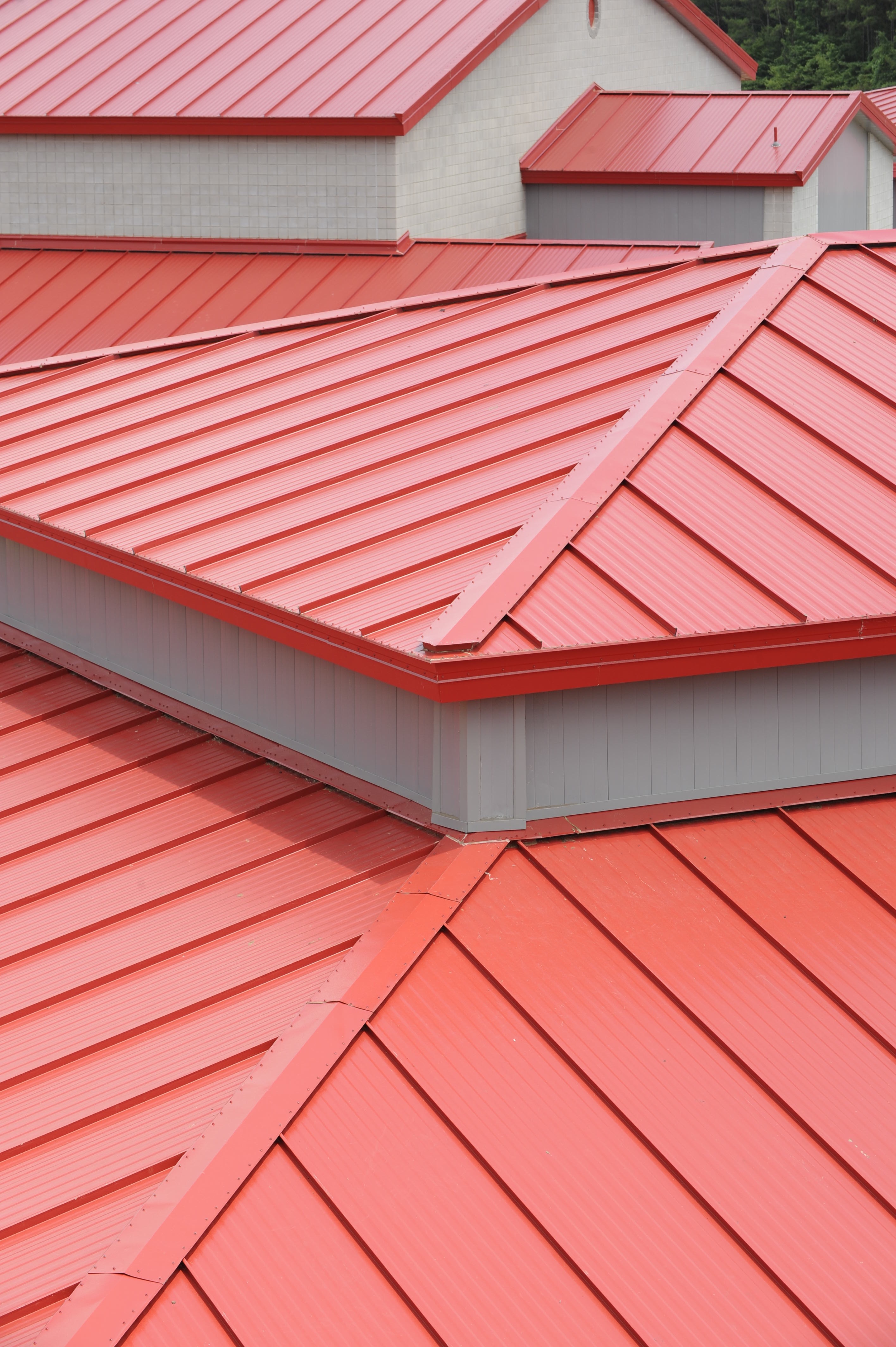More than 130,000 sf of Metl-Span CF36R insulated panels were utilized to re-roof the 8-building Haughton Middle School complex in Haughton, LA. The 2 ½ ft. panels were finished in Cool Bright Red and replaced a standing seam metal roof that was not performing properly.
“The old roof had been a problem for years,” said Lauren Marchive, project architect with Newman Marchive Carlisle, Inc., Shreveport, “and the Bossier Parish School Board wanted it gone.”
The design team researched three options:
- Removing the roof and installing decking with a new roof over it
- Using a single ply membrane system with insulation over the existing roof
- Removing the roof and installing an insulated metal panel system.
After consideration, the School Board determined the insulated metal panel system was the best solution. “Metl-Span was included in our bidding process and was the successful low bidder,” according to Marchive. “We had used Metl-Span roof and wall panels before on a Louisiana Department of Transportation building and the success of that project is what convinced us that this was a good option.”
Other factors that contributed to the selection of the Metl-Span system were thermal insulation qualities and the speed and ease of installation. “School remained in session during the renovation and it was important to minimize the disruption as much as possible,” Marchive said.
Installation of the Metl-Span panels was done by Louisiana Roofing Contractors, LLC, Bossier City, LA. “The biggest challenge was working around the school schedule,” according to Paul Tipton, owner. “We literally tore off the old and installed the new on a daily basis and made the roof watertight overnight, of course.”
The architectural design of the new roof was basically unchanged from the original. “There was quite a variety of different slopes to contend with and lots of details on the dormers,” according to Tipton. “But the system worked really well and achieved the design and performance everyone was looking for.” BD+C
Related Stories
| Nov 2, 2010
Energy Analysis No Longer a Luxury
Back in the halcyon days of 2006, energy analysis of building design and performance was a luxury. Sure, many forward-thinking AEC firms ran their designs through services such as Autodesk’s Green Building Studio and IES’s Virtual Environment, and some facility managers used Honeywell’s Energy Manager and other monitoring software. Today, however, knowing exactly how much energy your building will produce and use is survival of the fittest as energy costs and green design requirements demand precision.
| Nov 2, 2010
Yudelson: ‘If It Doesn’t Perform, It Can’t Be Green’
Jerry Yudelson, prolific author and veteran green building expert, challenges Building Teams to think big when it comes to controlling energy use and reducing carbon emissions in buildings.
| Nov 2, 2010
Historic changes to commercial building energy codes drive energy efficiency, emissions reductions
Revisions to the commercial section of the 2012 International Energy Conservation Code (IECC) represent the largest single-step efficiency increase in the history of the national, model energy. The changes mean that new and renovated buildings constructed in jurisdictions that follow the 2012 IECC will use 30% less energy than those built to current standards.
| Nov 1, 2010
Sustainable, mixed-income housing to revitalize community
The $41 million Arlington Grove mixed-use development in St. Louis is viewed as a major step in revitalizing the community. Developed by McCormack Baron Salazar with KAI Design & Build (architect, MEP, GC), the project will add 112 new and renovated mixed-income rental units (market rate, low-income, and public housing) totaling 162,000 sf, plus 5,000 sf of commercial/retail space.
| Nov 1, 2010
John Pearce: First thing I tell designers: Do your homework!
John Pearce, FAIA, University Architect at Duke University, Durham, N.C., tells BD+C’s Robert Cassidy about the school’s construction plans and sustainability efforts, how to land work at Duke, and why he’s proceeding with caution when it comes to BIM.
| Nov 1, 2010
Vancouver’s former Olympic Village shoots for Gold
The first tenants of the Millennium Water development in Vancouver, B.C., were Olympic athletes competing in the 2010 Winter Games. Now the former Olympic Village, located on a 17-acre brownfield site, is being transformed into a residential neighborhood targeting LEED ND Gold. The buildings are expected to consume 30-70% less energy than comparable structures.
| Oct 27, 2010
Grid-neutral education complex to serve students, community
MVE Institutional designed the Downtown Educational Complex in Oakland, Calif., to serve as an educational facility, community center, and grid-neutral green building. The 123,000-sf complex, now under construction on a 5.5-acre site in the city’s Lake Merritt neighborhood, will be built in two phases, the first expected to be completed in spring 2012 and the second in fall 2014.
| Oct 21, 2010
GSA confirms new LEED Gold requirement
The General Services Administration has increased its sustainability requirements and now mandates LEED Gold for its projects.
| Oct 18, 2010
World’s first zero-carbon city on track in Abu Dhabi
Masdar City, the world’s only zero-carbon city, is on track to be built in Abu Dhabi, with completion expected as early as 2020. Foster + Partners developed the $22 billion city’s master plan, with Adrian Smith + Gordon Gill Architecture, Aedas, and Lava Architects designing buildings for the project’s first phase, which is on track to be ready for occupancy by 2015.














